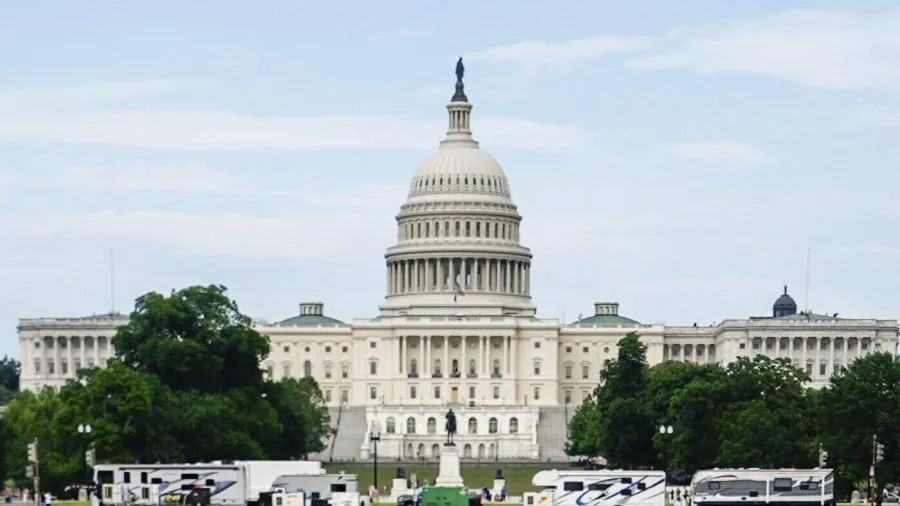
During one of our (Zain’s) last year of medical school, I took care of a 70-year-old woman who was admitted for a mild chronic obstructive pulmonary disease exacerbation. She was requiring slightly more oxygen than she was typically on at home and felt short of breath. She began recovering quite well during the first day of her hospital stay — stable, walking short distances and excited to go home. However, she wasn’t yet ready to be discharged without any oversight.
The typical next step would be to keep her in the hospital another night, continuing her exposure to the risks of inpatient medicine: hospital-acquired infection, exhaustion from the persistent monitor beeps and flashes, and another night away from the comfort of her family.
However, this time was different. Instead of another inpatient night, she and her family were approached by the health system’s Hospital at Home coordinator with what seemed a radical idea: the opportunity to continue her inpatient-level medical care at home, with appropriate clinical supervision.
A pulse oximeter, blood pressure cuff, and tablet for virtual monitoring were delivered to her home that afternoon. A nurse visited twice daily to check vitals and administer medications, and a physician conducted a video check-in each morning. Her labs were drawn at home and her care team was on call 24/7. She was given the opportunity to heal in the comfort of her own home — and it worked.
This patient’s story represents the promise of hospital at home — a model of care that delivers inpatient-level treatment inside of a patient’s home. A homage to home visits by physicians a century ago so richly depicted in literature and film, contemporary technology has enabled a new version of care in the comfort of patients’ homes.
Hospital at home has been shown to be safer for eligible patients. Eligible patients enrolled in hospital at home saw reduced mortality rates and fewer hospital-acquired infections across the board. A Mount Sinai study found hospital at home patients were nearly 50 percent less likely to experience a hospital readmission. Hospital at home also has the added benefit of reduced health care costs for the patient.
But, Congress has to act — otherwise the program is at risk.
The current expansion of the hospital at home model began out of necessity. In 2020, at the height of the COVID-19 pandemic, Congress and the Centers for Medicare and Medicaid Services (CMS) launched the Acute Hospital Care at Home waiver. It allowed hospitals to deliver full inpatient care to patients at home while still receiving Medicare payment under the usual Diagnosis-Related Group system — key to generating inpatient capacity when such high demands were placed on it.
It also protected non-COVID-19 patients from potential infections. This emergency waiver offered hospitals a lifeline during the height of the pandemic — but it also revealed a sustainable care model with long-term potential.
In December 2022 — when the initial waiver was set to expire — Congress extended it for an additional two years as part of the Consolidated Appropriations Act. It was extended again until 2024 in the American Relief Act. Now, the CMS waiver was extended until Sept. 30 as part of continuing resolutions passed earlier this year.
Importantly, key legislation was introduced in the previous 118th Congress and, recently, the 119th: the Hospital Inpatient Services Modernization Act. These bipartisan bills will extend the Acute Hospital Care at Home waiver and lay the foundation for a more permanent regulatory framework. They expand eligibility, standardize oversight and give CMS the tools to collect data and evaluate long-term research outcomes.
This bill should be debated, passed and signed — quickly.
With the increased proportion of older Americans, our health care system continues to face added stresses at all levels.
However, without legislative action, the entire program could vanish in September 2025 when the temporary waiver expires.
Apart from large academic institutions with established programs, hospitals are unlikely to have the resources to invest in home-based care infrastructure without the waiver for reimbursements in place. The cost for smaller hospitals to implement telemonitoring systems and mobile nursing fleets is substantial, especially with an uncertain policy environment.
This would have negative effects on especially rural communities, that already face significant health challenges and issues accessing appropriate care. A stable regulatory framework is the minimum needed to realize this model’s full potential.
Congress must pass the Hospital Inpatient Services Modernization Act and build a pathway toward a permanent policy solution. The data is compelling, the infrastructure is growing, and the need is real. Hospital at home is modernizing medicine, and it’s time for legislation to catch up. Hospital at home has already proven it can work — what we need now is the political will to let it thrive.
Zain Khawaja is an emergency medicine resident physician at Northwestern University. Manav Midha is a researcher at the USC Schaeffer Center for Health Policy & Economics, and a medical student at the Icahn School of Medicine at Mount Sinai.
Copyright 2025 Nexstar Media, Inc. All rights reserved. This material may not be published, broadcast, rewritten, or redistributed.
For the latest news, weather, sports, and streaming video, head to The Hill.







Comments